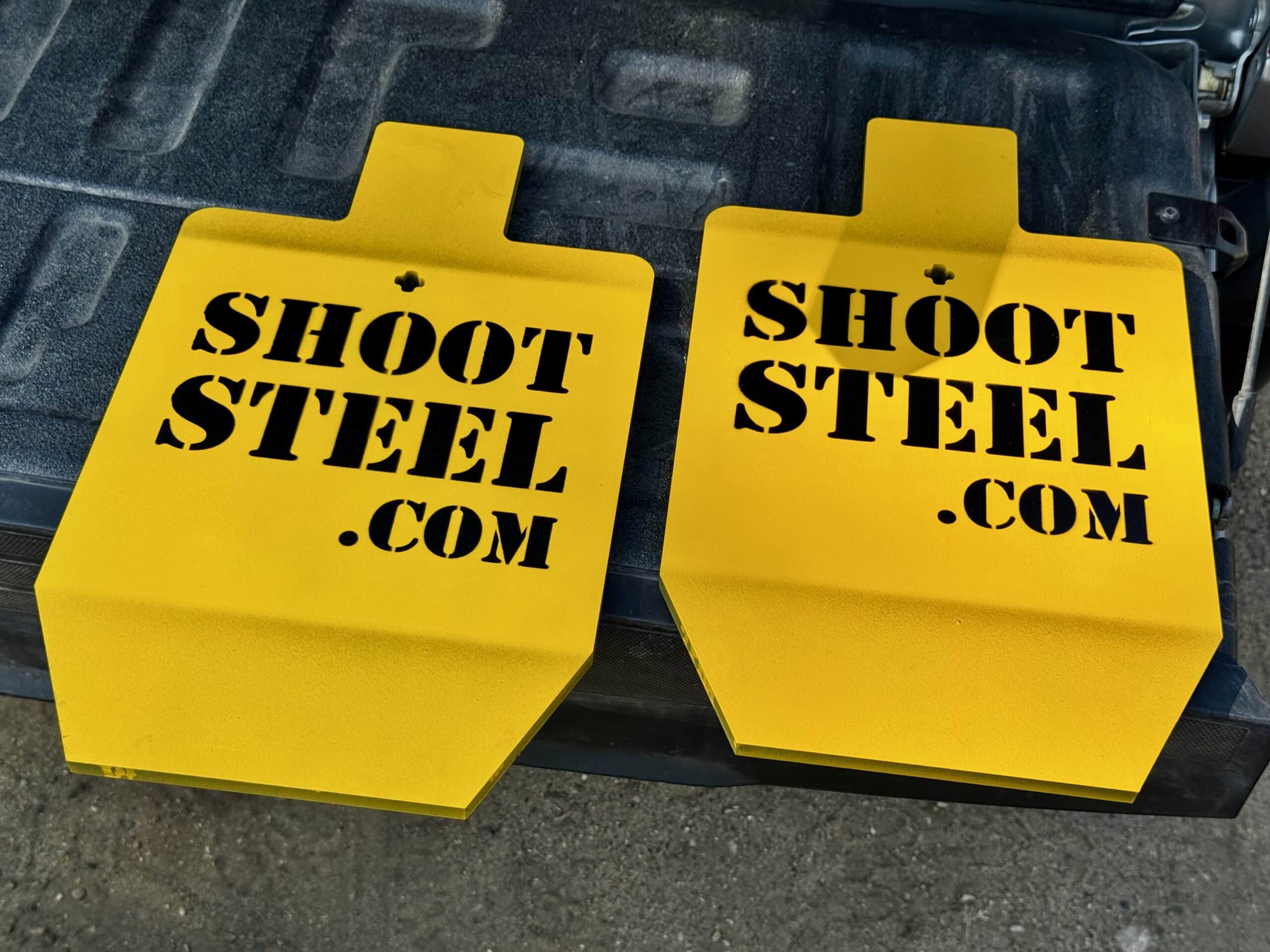When it comes to serious steel shooting, there’s no one-size-fits-all solution. Whether you’re running drills or dialing in at distance, the type of target you choose can make or break your training session. Reactive and static targets both have their place — but they serve different shooters, and different goals.
So which one should be in your range bag? Let’s break it down.
Static Steel Targets: The Foundation of Precision
Why Go Static?
- Zeroing & Accuracy: Nothing beats a solid, unmoving plate when you’re sighting in or stretching your rifle out past 300 yards.
- Predictable Placement: You know exactly where your hits are landing — perfect for precision-focused shooters.
- Built to Last: Fewer moving parts means less wear and tear. Static targets are ideal for high-volume, hard-hitting rifle rounds.
Our AR500 and AR550 static targets are cut from certified steel, precision machined, and built to handle anything from rimfire to .50 BMG (depending on the rating).
Reactive Steel Targets: Make Your Training Move
Reactive targets are made to move — literally. Whether they swing, flip, fall, or reset, reactive steel gives you real-time feedback with every hit.
Why Train Reactive?
- Instant Feedback: No question if you made contact — the target lets you (and everyone else) know.
- Tactical Realism: Perfect for competition or defensive training, where reaction time matters.
- Mental Engagement: You stay locked in. Moving targets force quicker follow-up shots and improve shot transitions.
Our Armadillo Reactive Target and Vital Zone Target are customer favorites — made for shooters who want more out of their range time.
Which One Should You Choose?
Here’s the short version:
| Training Goal | Best Target Type |
|---|---|
| Long-range precision | Static |
| Optics/zeroing | Static |
| Tactical training | Reactive |
| Competition-style drills | Reactive |
| Maximum versatility | Both |
Pro shooters — and serious hobbyists — often run both types. Start slow and precise with a static setup, then switch to reactive for speed drills and stress-based shooting.
Don’t Forget the Safety Basics
Steel targets are built to last, but your safety setup matters:
- Keep minimum distances (we recommend 10+ yards for pistols, 100+ for rifles)
- Use proper ammo — no steel core or armor-piercing rounds
- Mount targets securely — avoid ricochets from unstable setups
Whether you’re shooting solo or hosting a range day, safety is non-negotiable.
Final Shot
Reactive vs static isn’t about which one is better — it’s about training smarter. Know your goal, pick the right steel, and keep sending rounds with purpose. At Shoot Steel, we’re here to help you do exactly that.
Need help picking the right setup? Meet our Cartridge Guide.

